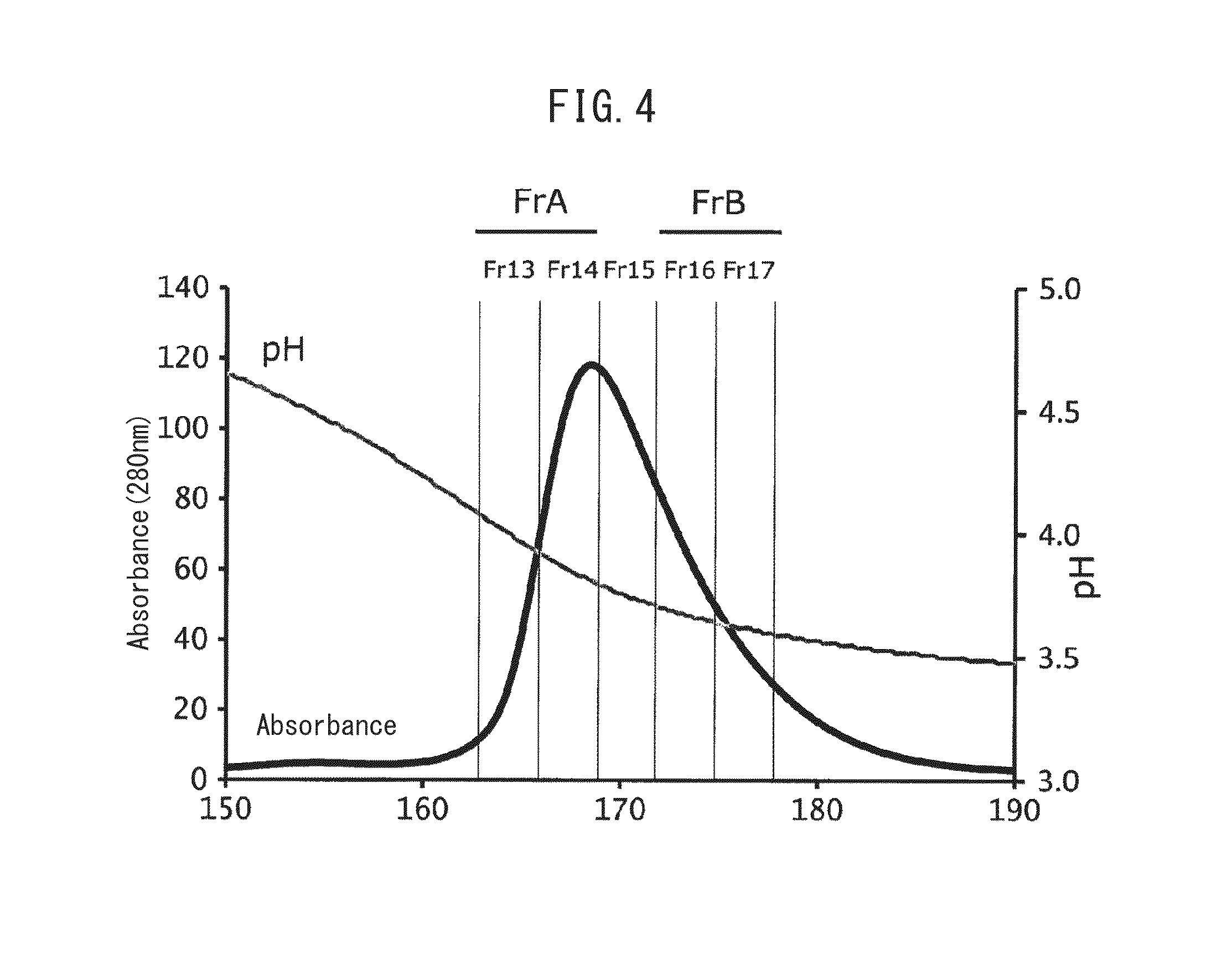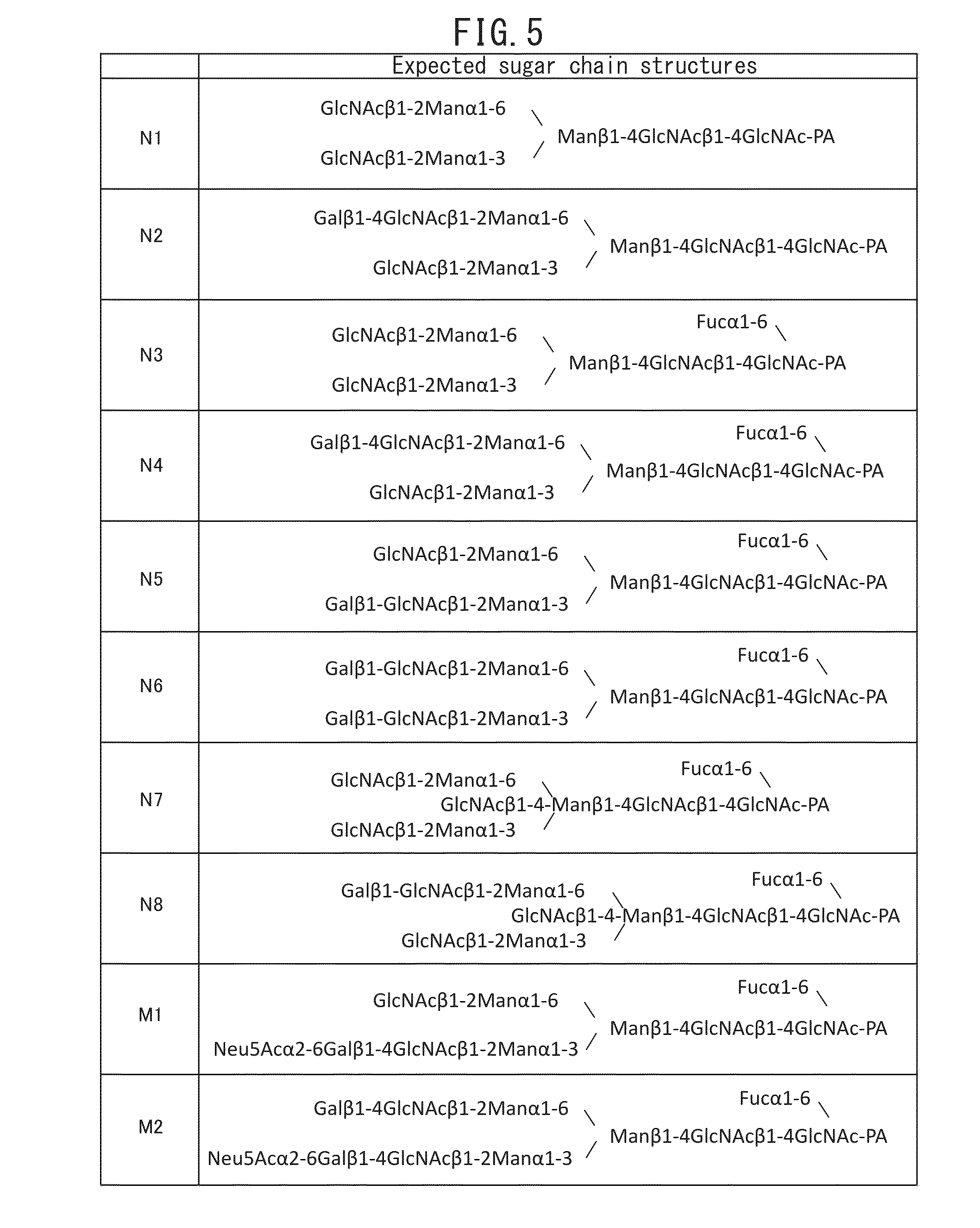Fc-BINDING PROTEIN, METHOD FOR PRODUCING SAID PROTEIN, AND ANTIBODY ADSORBENT USING SAID PROTEIN, AND METHODS FOR PURIFYING AND IDENTIFYING ANTIBODY USING SAID ADSORBENT
- Summary
- Abstract
- Description
- Claims
- Application Information
AI Technical Summary
Benefits of technology
Problems solved by technology
Method used
Image
Examples
example 1
Preparation of Fc-Binding Protein or Human FcγRIIIa Expression Vector
[0121](1) A nucleotide sequence with codons converted from the human type to the E. coli type, was designed based on the amino acid sequence from glycine (Gly) at position 17 to glutamine (Gln) at position 192 of the amino acid sequence of human FcγRIIIa of SEQ ID NO: 1, by using the DNAworks method (Nucleic Acids Res., 30, e43, 2002). The designed nucleotide sequence is SEQ ID NO: 2.
[0122](2) For construction of a polynucleotide including the sequence of SEQ ID NO: 2, oligonucleotides consisting of the sequences of SEQ ID NO: 3 to 20 were synthesized, and the oligonucleotides were used for the two-step PCR described below.
[0123](2-1) In the first step of the PCR, a reaction mixture with the composition shown in Table 1 was prepared and the reaction mixture was heat treated at 98° C. for 5 minutes, after which 10 cycles of reaction were repeated, where one cycle consisted of a first step at 98° C. for 10 seconds, a...
example 2
Mutagenesis in Fc-Binding Protein and Construction of Library
[0129]For the Fc-binding protein expression vector pER-eFcR constructed in Example 1, mutation transfer was conducted randomly by error-prone PCR in the polynucleotide portion coding for the Fc-binding protein.
[0130](1) Error-prone PCR was conducted using pET-eFcR constructed in Example 1 as template. The error-prone PCR was carried out by preparing a reaction mixture with the composition shown in Table 3, and then heat treating the reaction mixture at 95° C. for 2 minutes, carrying out 35 cycles of reaction where one cycle consisted of a first step at 95° C. for 30 seconds, a second step at 60° C. for 30 seconds and a third step at 72° C. for 90 seconds, and finally conducting heat treatment at 72° C. for 7 minutes. As a result of the error-prone PCR, mutations were satisfactorily introduced into the polynucleotide coding for Fc-binding protein, with an average mutagenesis rate of 1.26%.
TABLE 3Concentration / Compositionvol...
example 3
Screening of Heat-Stabilized Fc-Binding Protein
[0133](1) The random mutant library (of transformants) prepared in Example 2 was inoculated into 200 μL of 2YT liquid medium. (16 g / L peptone, 10 g / L yeast extract, 5 g / L sodium chloride) containing 50 μg / mL kanamycin, and a 96-well deep well plate was used for shake culturing overnight at 30° C.
[0134](2) After culturing, 5 μL of culture solution was inoculated into 50 μg / mL of 2YT liquid medium containing 0.05 mM IPTG (isopropyl-β-D-thiogalactopyranoside), 0.3% glycine and 50 μg / mL kanamycin, and a 96-well deep well plate was used for shake culturing overnight at 20° C.
[0135](3) After culturing, the culture supernatant obtained by centrifugation was diluted 2-fold with 20 mM Tris-HCl buffering solution (pH 7.4) containing 150 mM sodium chloride. The diluted solution was heat treated at 45° C. for 10 minutes.
[0136](4) The antibody binding activity of the Fc-binding protein after the heat treatment of (3) and the antibody binding activit...
PUM
| Property | Measurement | Unit |
|---|---|---|
| Current | aaaaa | aaaaa |
| Current | aaaaa | aaaaa |
| Structure | aaaaa | aaaaa |
Abstract
Description
Claims
Application Information
 Login to View More
Login to View More - R&D
- Intellectual Property
- Life Sciences
- Materials
- Tech Scout
- Unparalleled Data Quality
- Higher Quality Content
- 60% Fewer Hallucinations
Browse by: Latest US Patents, China's latest patents, Technical Efficacy Thesaurus, Application Domain, Technology Topic, Popular Technical Reports.
© 2025 PatSnap. All rights reserved.Legal|Privacy policy|Modern Slavery Act Transparency Statement|Sitemap|About US| Contact US: help@patsnap.com



